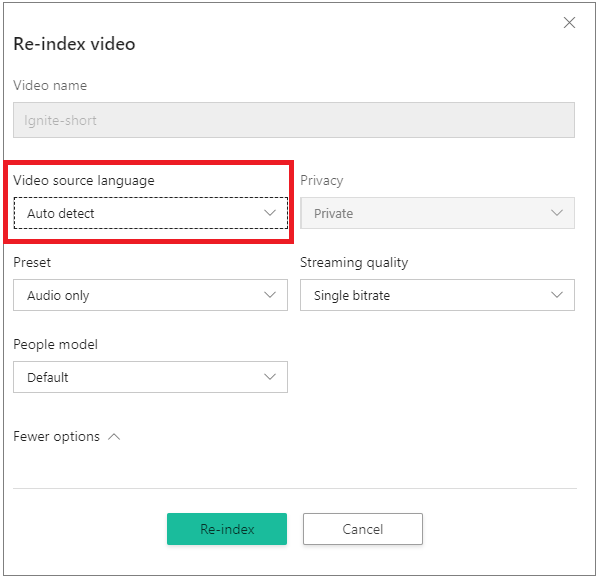Automatically identify the spoken language with language identification model
Warning
Over the past year, Azure AI Video Indexer (VI) announced the removal of its dependency on Azure Media Services (AMS) due to its retirement. Features adjustments and changes were announced and a migration guide was provided.
The deadline to complete migration was June 30, 2024. VI has extended the update/migrate deadline so you can update your VI account and opt in to the AMS VI asset migration through August 31, 2024.
However, after June 30, if you have not updated your VI account, you won't be able to index new videos nor will you be able to play any videos that have not been migrated. If you update your account after June 30, you can resume indexing immediately but you won't be able to play videos indexed before the account update until they are migrated through the AMS VI migration.
Azure AI Video Indexer supports automatic language identification (LID), which is the process of automatically identifying the spoken language from audio content. The media file is transcribed in the dominant identified language.
See the list of supported by Azure AI Video Indexer languages in supported languages.
Make sure to review the Guidelines and limitations section.
Choosing auto language identification on indexing
When indexing or reindexing a video using the API, choose the auto detect option in the sourceLanguage parameter.
When using portal, go to your Account videos on the Azure AI Video Indexer home page and hover over the name of the video that you want to reindex. On the right-bottom corner, select the Re-index button. In the Re-index video dialog, choose Auto detect from the Video source language drop-down box.

Model output
Azure AI Video Indexer transcribes the video according to the most likely language if the confidence for that language is > 0.6. If the language can't be identified with confidence, it assumes the spoken language is English.
Model dominant language is available in the insights JSON as the sourceLanguage attribute (under root/videos/insights). A corresponding confidence score is also available under the sourceLanguageConfidence attribute.
"insights": {
"version": "1.0.0.0",
"duration": "0:05:30.902",
"sourceLanguage": "fr-FR",
"language": "fr-FR",
"transcript": [...],
. . .
"sourceLanguageConfidence": 0.8563
}
Guidelines and limitations
Automatic language identification (LID) supports the following languages:
See the list of supported by Azure AI Video Indexer languages in supported languages.
- If the audio contains languages other than the supported list, the result is unexpected.
- If Azure AI Video Indexer can't identify the language with a high enough confidence (greater than 0.6), the fallback language is English.
- Currently, there isn't support for files with mixed language audio. If the audio contains mixed languages, the result is unexpected.
- Low-quality audio may affect the model results.
- The model requires at least one minute of speech in the audio.
- The model is designed to recognize a spontaneous conversational speech (not voice commands, singing, and so on).
Feedback
Coming soon: Throughout 2024 we will be phasing out GitHub Issues as the feedback mechanism for content and replacing it with a new feedback system. For more information see: https://aka.ms/ContentUserFeedback.
Submit and view feedback for